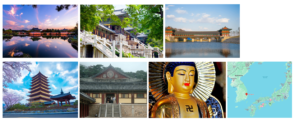“After dinner, we shall all talk.”
That’s the rule my dad imposed on the family from the time I was 10 years old through age 15. For the next five years, from ~6:30-7pm each evening, the three of us – my Dad, Walter, my brother, Brian, and I – would sit at the dinner table for half an hour or so and just talk. Often the topic was politics, but it could be anything: relationships, philosophy, psychology, etc. Although he never stated it overtly, my Dad’s goal, I believe, was to give us kids practice with lateral thinking and the articulation of thoughts. For me, the youngest, it often felt a little like Monty Python’s “The Argument Sketch.” More often than not, I’d venture an idea and my Dad and brother would shoot holes through it. Although not always pleasant, per se, these table-side conversations were useful. They taught me how to construct an argument and defend it.
What I learned most from my Dad’s after-dinner discussions is, “You need to have an opinion.” One opinion. Not 12 opinions. You need to be decisive.
What to make, then, of Bulguksa Temple in Gyeongju, South Korea? A UNESCO World Heritage site dating as far back as 528 AD, the current temple was constructed in 750 by Chief minister Kim Daeseong to pacify the spirits of his parents. Today, it is a head temple of the Jogye Order of Korean Buddhism, containing stone pagodas, the “Blue Cloud Bridge,” two gilt-bronze statues of the Buddha and a curious decoration: a swastika!

Okay, it’s not THAT swastika – the one Hitler co-opted as the symbol of Nazi Germany…the one White supremacists continue to use as an emblem of fear and hate. The Asian swastika is, in fact, a millennia-old sacred symbol used in Hinduism, Buddhism and Jainism. An equilateral cross with its legs bent at right angles, the swastika of the Far East is flipped the opposite direction from Hitler’s divisive symbol. It represents not hate but peace and good fortune.
I don’t know any of this at the time, of course. When I visit Bulguksa at age 25, all I can think is, “This is a Nazi temple!” I can almost hear my Dad’s voice, echoing from the past: “What’s your opinion, Dave? Take a stand.”
But the thing is, I don’t have just one thought about Bulguksa. Part of me is outraged, of course. At the same time, however, I can’t help noticing what a lovely building this is, with its red and yellow walls, its elegant sloped-tile roof. Gyeongju, in general – with its myriad temples and pools — is a place of supreme serenity and spirituality. So what’s up with the swastika!
Although I appreciate Dad’s lessons in argumentation and debate, these days I find that the human mind is a complex thing – much more complex than my childhood training. We almost never have just ONE thought about something. We can quite easily hold half a dozen thoughts in our minds, simultaneously. If I think Bulguksa’s swastika is a Nazi symbol, of course I’m going to be repelled. But at the same time, I can appreciate the beauty of the temple complex. I can also feel curiosity. And surprise. And a myriad of other thoughts and feelings to boot.
If I were in my Dad’s shoes today, holding an after-dinner conversation, this is what I’m might say to my kids: “Let’s look at this from a variety of perspectives. What are your thoughts about this topic?”
(Thinking about quitting your job? Moving to a new town? Splitting up with your partner? Consider whether you really need to be 100% satisfied with your situation. Chances are you have a variety of simultaneous thoughts about your status quo: some positive, some negative, many somewhere in between. Weigh them all carefully. Be curious. And don’t let just one of your thoughts dictate your decision. You mind contains multitudes)
